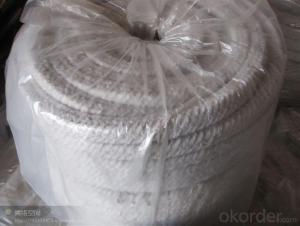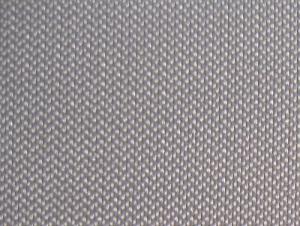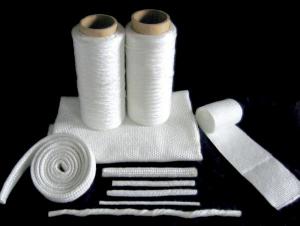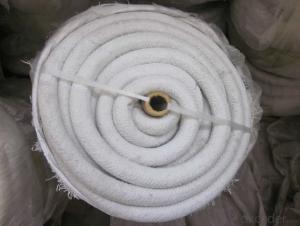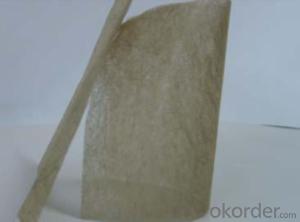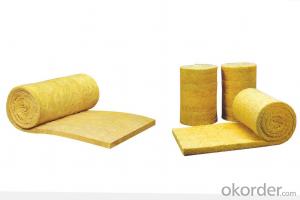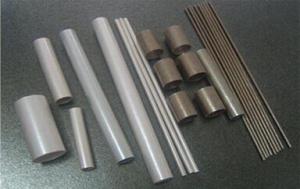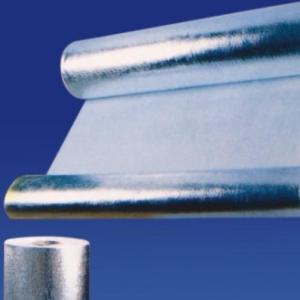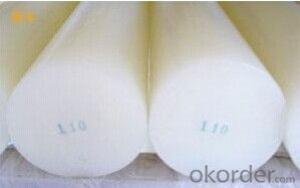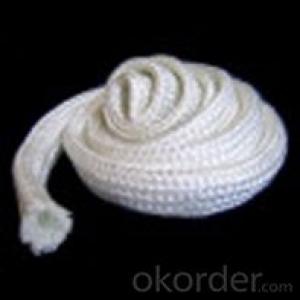Fire Ceramic Fibre Round & Square Ropes 2015
- Loading Port:
- Shanghai
- Payment Terms:
- TT OR LC
- Min Order Qty:
- 10 m.t.
- Supply Capability:
- 100 m.t./month
OKorder Service Pledge
OKorder Financial Service
You Might Also Like
Quick Details
| Place of Origin: | China (Mainland) | Application: | Refractory | Working Temperature: | 450,1000,1260 |
| Fiber Diameter: | 15,20 | Model Number: | Fabric,Round woven rope, | Organic content: | ≤15 |
| Bulk Density (Kg/m3):: | 500±30 |
Packaging & Delivery
| Packaging Detail: | pp woven bag or carton box |
| Delivery Detail: | 25days |
Specifications
high quality bio soluble ceramic blanket
Specifications
Fine tensile strength
Fine high-temperature strength
Good at heat insulation
Low heat conduction ration
Fine tensile strength
Fine high-temperature strength
Good at heat insulation
Low heat conduction ration
PROCESSING:
Fibre Sennit: It includes core rope and outer warp. The core rope contains aluminosilicate fibre yarn and blanket strip etc. The outer wrap is weaved by using glass fibre or refractory alloy silk according to temperature and condition used.
Fibre wringed rope: It is wringed by multilayer aluminosilicate fibre silk which are strengthen by glass fibre and refractory alloy silk.
Fibre quit: It is bound up by glass silk fibre fabric using aluminosilicate disperse cotton as raw material. According to temperature and condition used, it can be used at the condition which can not be used by other aluminosilicate products.
TECHNICAL SPECIALITY:
Good heat resistance. The ceramic fibre fabric, which strentgth is increased by refractory alloy silk , can be used at 1000°Ccontinuously.
High quality of antacid, oil resistance and water vapor resistance
High quality of electric insulation
Fine tensile strength
Fine high-temperature strength
Good at heat insulation
Low heat conduction ration
Innocuity and harmless, not polluting environment.
APPLICATION:
Heat insulation for high-temperature pipeline and container
Kiln screen and shade
Receive spark reel door
Seal of kiln and stove door
High-temperature safety
Fireproofing coil door
Making compound materials
Safety of cable of fuel pipeline
Bag and cover for fireproofing
SPECIFICATIONS FOR THE FIBRE ROPE,STRAP,QUILT,FIBERGLAS FABRIC OF ALUMINOSILICATE:
Name | Fabric | Strap | Round woven rope | Square woven rope | Yarn twist rope | Topes twisted rope | |
Classfication Temperature(°C) | 1260 | ||||||
Density(Kg/m3) | 500±30 | ||||||
Organic content | ≤15 | ||||||
Suggest Using Temperature(°C) | 450 (Glass fiber reinforced) 1000 (Heat resistance alloy silk reinforced) | ||||||
Burning amount (800°C)% | 12±2 | 12±2 | 12±2 | 12±2 | 12±2 | 8-10 | |
Size(mm) | 30*1*2 30*1*3 | 30*20*2.3 | φ15 φ20 | 20*20 | φ15 φ20 | φ20 | |
- Q:Can glass fiber textiles be used as thermal barriers?
- Yes, glass fiber textiles can be used as thermal barriers. Glass fiber textiles are known for their excellent thermal insulation properties. They have a low thermal conductivity, which means they are effective in reducing heat transfer through conduction. This makes them a suitable choice for thermal barrier applications. Additionally, glass fiber textiles can withstand high temperatures, making them ideal for use in environments where heat resistance is required. They are often used in the construction industry as insulation materials for walls, roofs, and floors to prevent heat loss or gain. Glass fiber textiles can also be found in various industrial applications such as insulation for pipes, ovens, and furnaces. Overall, glass fiber textiles are a reliable and effective option for thermal barrier purposes.
- Q:How do glass fiber textiles resist staining?
- Glass fiber textiles resist staining due to their smooth surface and non-absorbent nature. The composition of glass fibers makes it difficult for stains to penetrate or adhere to the fabric, allowing for easy removal of any spills or marks.
- Q:What are the different surface treatments available for glass fiber textile?
- There are several surface treatments available for glass fiber textiles, including sizing, coating, and laminating. Sizing involves applying a protective layer to the surface of the fibers to improve their handling and processing characteristics. Coating is the application of a layer of material on the surface to enhance properties such as abrasion resistance, water repellency, or flame retardancy. Laminating is the process of bonding multiple layers of textiles or other materials together to create a composite structure with improved strength and durability. These surface treatments can be tailored to meet specific requirements and applications of glass fiber textiles.
- Q:What is fiberglass cloth for?
- The external wall insulation mesh is based on alkali or alkali glass fiber yarn, woven glass fiber mesh to the substrate, and then a new alkali resistant products coated with acrylic copolymer solution after drying and is mainly used in cement, gypsum, walls, buildings and other structures in the outer surface enhanced crack.
- Q:Can glass fiber textiles be used for reinforcement in concrete bridges?
- Yes, glass fiber textiles can be used for reinforcement in concrete bridges. Glass fiber textiles provide high tensile strength and stiffness, making them suitable for reinforcing concrete structures. They are corrosion-resistant and lightweight, making them a favorable alternative to traditional steel reinforcement. Additionally, glass fiber textiles offer improved durability and lifespan to concrete bridges.
- Q:Can glass fiber textiles be used in reinforcement of metals?
- Glass fiber textiles have the capability to reinforce metals, providing them with increased strength, flexibility, and durability. By incorporating glass fiber textiles as a reinforcement material, metals can greatly improve their mechanical properties, resulting in enhanced resistance to deformation and fracture. The process involves weaving or knitting glass fibers into a fabric, which is then combined with metals through methods like lamination, welding, or casting. This combination of glass fibers and metals creates a composite material that harnesses the superior qualities of both materials. In industries such as automotive, aerospace, construction, and marine, where there is a demand for lightweight materials with exceptional strength, glass fiber textiles can be utilized to reinforce metals effectively.
- Q:How does glass fiber textile perform in terms of gas permeability?
- Glass fiber textiles possess a low gas permeability, which implies that gases cannot easily penetrate them. This attribute stems from the tightly woven fabric structure, preventing the passage of air and other gases across its surface. Consequently, glass fiber textiles find extensive application in scenarios demanding gas tightness, including insulation materials, protective clothing, and filtration systems. The remarkable gas impermeability of glass fiber textiles guarantees their efficacy in containing or filtering out gases, rendering them exceptionally suitable for diverse industrial and residential uses.
- Q:Do glass fiber textiles have good tensile strength?
- Yes, glass fiber textiles have excellent tensile strength.
- Q:Are glass fiber textiles recyclable?
- Yes, glass fiber textiles are recyclable. Glass fiber textiles, also known as fiberglass, can be recycled by melting down the fibers and reforming them into new products. The recycling process involves sorting the glass fiber textiles, removing any impurities, and then melting them at high temperatures to create molten glass. This molten glass can then be spun into new fibers or molded into different shapes for various applications. Recycling glass fiber textiles not only helps to reduce waste and conserve resources but also has environmental benefits, as it reduces the need for raw materials and energy-intensive manufacturing processes.
- Q:Can glass fiber textile be used in tents for extreme weather conditions?
- Glass fiber textile is indeed suitable for use in tents designed for extreme weather conditions. Its exceptional strength and durability make it an ideal choice for withstanding harsh weather elements like strong winds, heavy rain, and snow. Furthermore, glass fiber textiles display remarkable tear resistance and provide excellent insulation, keeping the tent interior warm during cold weather and cool in hot weather. They also possess outstanding water repellency, ensuring that the tent remains dry even in rainy or snowy conditions. In addition, these textiles are lightweight, facilitating easy transportation and setup in various locations. In conclusion, glass fiber textile proves to be a dependable and efficient material for tents in extreme weather conditions.
1. Manufacturer Overview |
|
|---|---|
| Location | |
| Year Established | |
| Annual Output Value | |
| Main Markets | |
| Company Certifications | |
2. Manufacturer Certificates |
|
|---|---|
| a) Certification Name | |
| Range | |
| Reference | |
| Validity Period | |
3. Manufacturer Capability |
|
|---|---|
| a)Trade Capacity | |
| Nearest Port | |
| Export Percentage | |
| No.of Employees in Trade Department | |
| Language Spoken: | |
| b)Factory Information | |
| Factory Size: | |
| No. of Production Lines | |
| Contract Manufacturing | |
| Product Price Range | |
Send your message to us
Fire Ceramic Fibre Round & Square Ropes 2015
- Loading Port:
- Shanghai
- Payment Terms:
- TT OR LC
- Min Order Qty:
- 10 m.t.
- Supply Capability:
- 100 m.t./month
OKorder Service Pledge
OKorder Financial Service
Similar products
New products
Hot products
Related keywords

